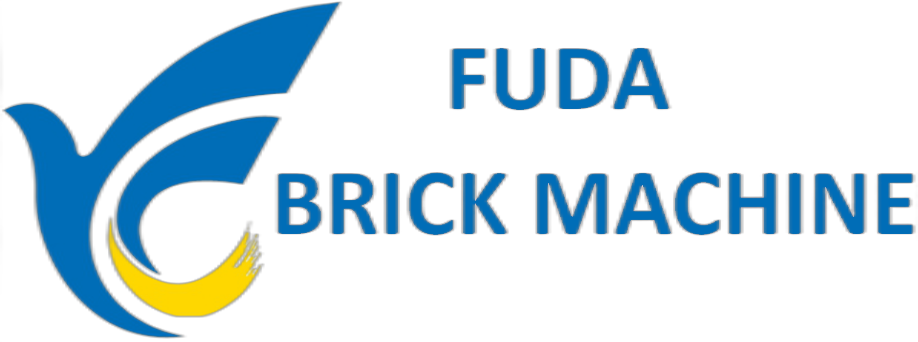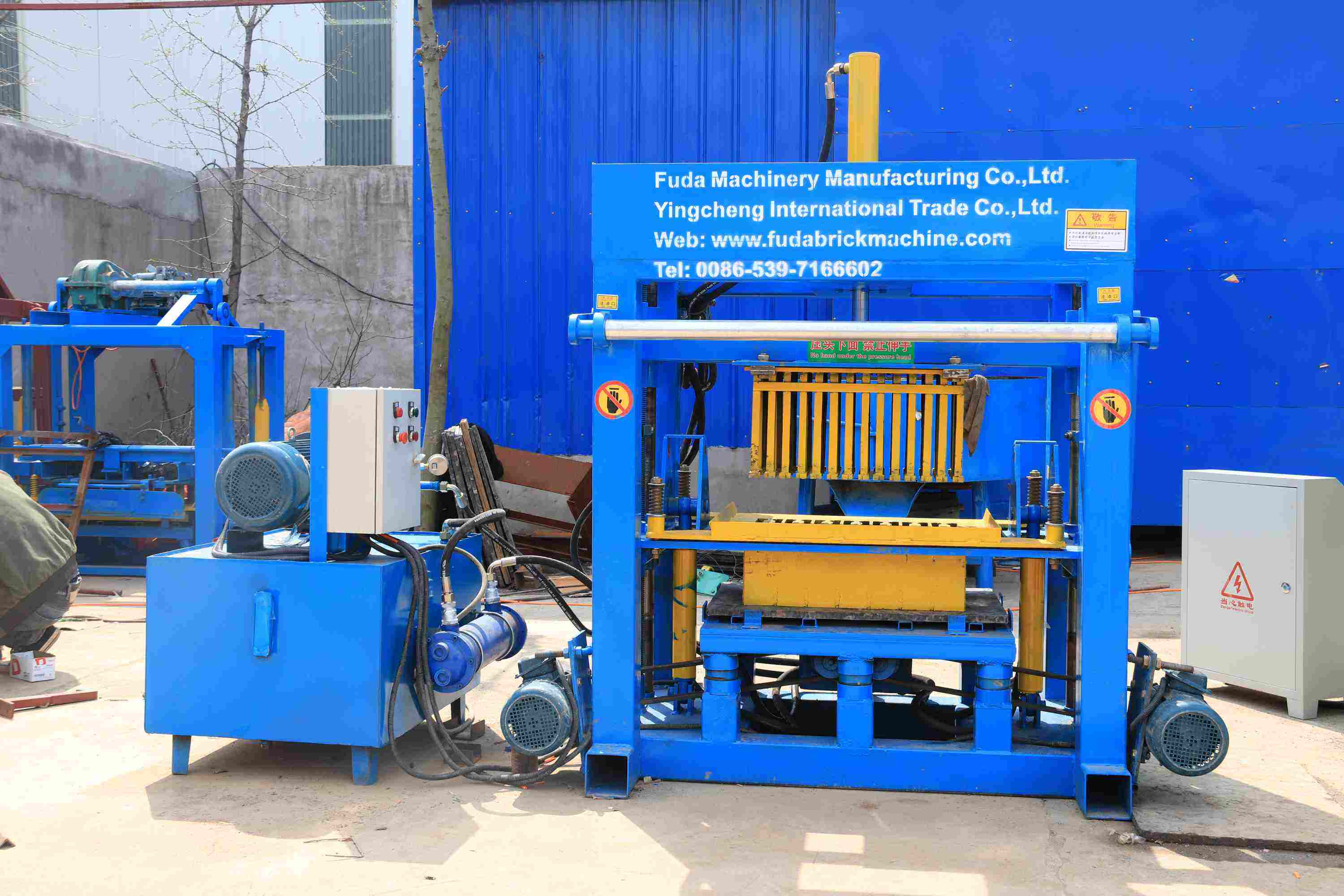Understanding the Semi Automatic Block Making Machine
Definition and Core Mechanism of Semi Automatic Block Making Machine
Semi automatic block makers work by mixing hands on feeding with automatic pressing cycles. They strike a nice middle ground when it comes to saving money on labor costs versus spending big bucks upfront. What happens is workers load up the machine with either concrete or cement mix into this big hopper area. Then comes the magic part where hydraulic or mechanical parts kick in and squeeze everything down into those neat little blocks we all know and love, thanks to those standard sized molds. The best thing about these machines? They take away a lot of the backbreaking work that comes with doing everything by hand, but they don't cost nearly as much as going full automation. Most small to medium sized operations find them perfect if they need around 500 to maybe 2000 blocks each day according to Structures Insider from last year.
How Hydraulic Systems Enhance Performance in Semi-Automatic Hydraulic Block-Making Machines
Hydraulic systems boost performance quite a bit because they maintain steady pressure all the way up to around 2,100 psi. This means we get blocks that are dense, accurate in dimensions, and with not much wasted material at all. The numbers speak for themselves really these machines churn out approximately 3,500 bricks each day which is actually about 2.5 times what someone could do manually. Plus, they save roughly 18 percent on energy costs when compared to those old mechanical versions according to research from Ponemon back in 2023. And let's talk about maintenance modern hydraulic units come equipped with parts that lubricate themselves automatically. That cuts down how often we need to service them, extending the time between maintenance sessions to somewhere between 400 and 500 hours of operation. Definitely makes sense for anyone looking to keep their production running smoothly without constant interruptions.
Comparison Between Manual and Semi-Automatic Block-Making Machines
| Parameter | Manual Machines | Semi-Automatic Machines |
|---|---|---|
| Daily Output Capacity | <1,000 blocks | 2,000—3,500 blocks |
| Labor Requirements | 3—4 operators | 1—2 operators |
| Initial Investment | $3,000—$5,000 | $12,000—$18,000 |
| Payback Period | 6—8 months | 10—14 months |
Despite higher upfront costs, semi-automatic machines typically recover expenses within 2—3 years due to reduced labor needs and 30—40% lower material waste, based on a 2024 analysis of small-scale manufacturers.
Cost-Effectiveness and Return on Investment
Reducing Operational Costs with Semi-Automatic Hydraulic Concrete Block Making Machines
According to industry reports from 2023, semi automatic machinery can cut down on running expenses somewhere around 18 to maybe even 30 percent when compared against traditional manual methods. These machines achieve this mainly because their hydraulic systems compress materials with such accuracy that there's just not much waste left over. Plus, with automation handling both mixing and ejection processes, a single worker is capable of producing approximately 500 blocks every hour. What makes these systems really stand out though is how they incorporate vibration technology during compaction. This feature maintains uniform density throughout production batches without needing extra hands on deck for quality checks or adjustments.
Long-Term Financial Benefits: Energy Efficiency and Low Maintenance
These machines consume 35% less energy than fully automatic systems while achieving 85—90% of their output capacity (PWC Industry Analysis 2024). Simplified mechanics result in lower maintenance demands, with operators reporting upkeep costs of $0.02—$0.05 per block—significantly below the $0.12—$0.18 range for fully automated models.
ROI Analysis: Semi Automatic vs Fully Automatic Block Making Machines
A 24-month ROI comparison reveals:
| Factor | Semi-Automatic | Fully Automatic |
|---|---|---|
| Initial Investment | $18k—$35k | $55k—$120k |
| Monthly Energy Cost | $220 | $480 |
| Operator Training Time | 14 hours | 60 hours |
For small to medium enterprises producing under 15,000 blocks daily, semi-automatic machines achieve break-even 8—11 months faster, thanks to lower capital outlay and simpler operational requirements.
Case Study: Cost Reduction in Small-Scale Block Manufacturing Plants
A Southeast Asian plant transitioned to semi-automatic hydraulic machines and reduced its per-block production cost from $0.38 to $0.26 within 10 months. By integrating automated compression with manual quality checks, the facility improved output consistency by 22% without increasing staff, demonstrating how hybrid workflows optimize both cost and control.
Production Capacity and Time Efficiency Gains
Measuring Output: Production Capacity of Semi Automatic Block Making Machine
Semi automatic block makers can crank out around 800 to 1,200 concrete blocks every hour according to the latest Construction Equipment Report from 2024, which puts them way ahead of traditional hand made methods by about five times. These machines work their magic through vibration assisted mold filling combined with fast acting hydraulic presses that get each block cluster done in just 15 to 20 seconds. Pallet switching still needs human hands for now, but overall the system keeps running non stop most of the time without much interruption in production flow.
Time Efficiency Compared to Manual Block Production Methods
Semi-automatic production cuts labor hours by 65% compared to traditional techniques, according to a 2023 study in Ghana. Key contributors include:
- Simultaneous curing during active production
- Elimination of hand-mixing inconsistencies
- Optimized hydraulic sequencing that reduces cycle time by 22%
In Malawi, a brick cooperative shortened its production cycle from 14 days to 9 after adopting semi-automatic systems, maintaining use of local clay materials while improving throughput.
Real-World Example: Daily Output Increase in Medium-Scale Businesses Using Yingcheng Machines
At their facility in Kenya, Linyi Yingcheng International Trade saw production jump by 40% after installing the QT4-25 semi auto model. Now they're cranking out around 6,000 blocks each day with only three people running things. They put in some sort of live monitoring system for production which cut down those annoying gaps between batches by about 18 minutes every hour. What's interesting is how they kept most of their workers on board too. Instead of laying anyone off when machines took over, they trained the old hands to become machine operators. This approach really helped keep operations going without major disruptions during the switch to automation.
Applications and Scalability for Growing SMEs
Ideal Use Cases for Semi-Automatic Hydraulic Block-Making Machines
Semi automatic machines work well when companies need to produce moderate volumes without breaking the bank. These types of equipment show up all over residential construction sites, local paving jobs, and block making operations serving nearby communities. The hydraulic systems on these machines tend to be pretty efficient and they keep running smoothly even where electricity can be unreliable. Most setups will churn out somewhere between 800 to 1200 regular blocks each day, which is generally sufficient for supporting smaller housing projects covering around 3000 square feet monthly. Some operators report getting slightly different outputs depending on maintenance schedules and material quality though.
Scalability for Expanding Construction Enterprises
Growing SMEs can scale efficiently through modular enhancements such as:
- Interchangeable molds: Switch between solid blocks, hollow units, and pavers without replacing core equipment
-
Capacity stacking: Add a second hydraulic press to boost output by 40—60%
Manufacturers offer phased automation options, allowing businesses to retain semi-automatic workflows while gradually introducing PLC controls for critical functions. This incremental strategy lowers financial risk, with enterprises reporting ROI periods of 18—24 months when expanding strategically.
Industry Paradox: Why Some SMEs Still Rely on Manual Block Production
Despite clear advantages, 38% of small block producers continued using manual methods in 2023. Primary reasons include:
- Perceived complexity: Operators unfamiliar with hydraulics often overestimate training demands
- Cash flow limitations: Machine costs of $8,500—$12,000 deter owners focused on short-term liquidity
-
Niche craftsmanship needs: Heritage restoration projects sometimes require hand-finished textures incompatible with mechanization
Forward-thinking SMEs overcome these barriers through equipment leasing and targeted training programs, effectively bridging traditional skills with modern productivity tools.
Ease of Operation and Practical Implementation
User-Friendly Design Features Enhancing Ease of Use
Modern semi-automatic machines emphasize intuitive design with color-coded control panels, centralized hydraulic interfaces, and modular component layouts. These features reduce operator errors by 37% compared to manual setups (IFC 2023). Ergonomic access points and real-time pressure monitoring enable precise adjustments to block density with minimal supervision, improving consistency across batches.
Training Requirements and Operator Skill Level Needed
Semi automatic machines don't need those fancy tech experts that full automation requires. They work fine with someone who knows basic mechanics. Most machine suppliers offer around 3 to 5 days worth of hands on training at the factory itself. The training covers setting up molds, adjusting pressures properly, and doing regular maintenance checks. Because these machines are so accessible, businesses can send their current staff for training rather than bringing in expensive outside specialists. This cuts down on reliance on outside help while also helping build skills within the company's own team over time.
FAQs
What is the main benefit of semi-automatic block-making machines? The main benefit of semi-automatic block-making machines is that they strike a balance between manual labor and full automation, reducing labor costs while providing a high production capacity, typically between 500 to 2,000 blocks per day.
How does a hydraulic system enhance block-making machine performance? Hydraulic systems provide steady pressure, enhancing the density and precision of blocks while reducing material waste and energy consumption.
What are the investment and payback periods for semi-automatic machines? The initial investment for semi-automatic machines ranges from $12,000 to $18,000, with a payback period of approximately 10 to 14 months, although costs can be recovered within 2 to 3 years through reduced labor and material waste.
How do semi-automatic machines compare to fully automatic machines? Semi-automatic machines have a lower initial investment, consume 35% less energy, and require shorter training periods, making them suitable for small to medium enterprises with a faster break-even point than fully automated systems.

